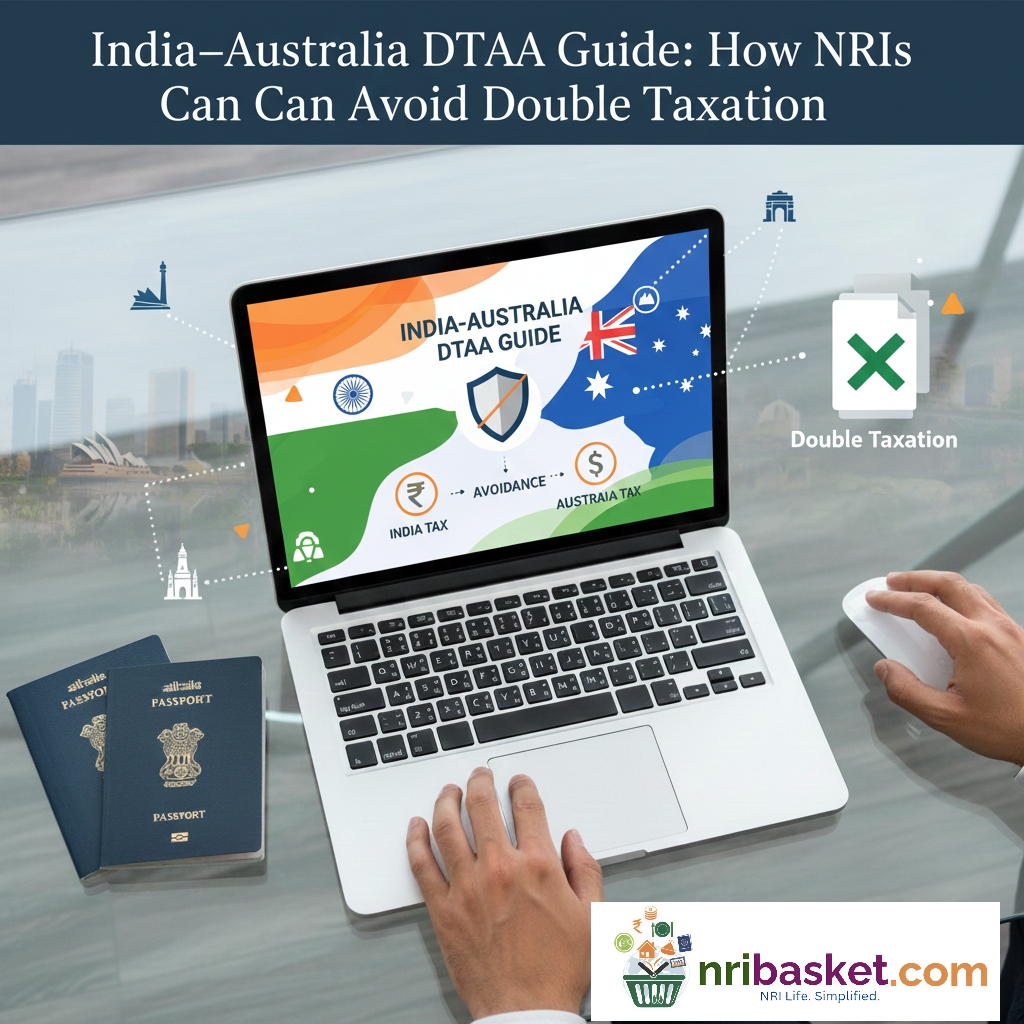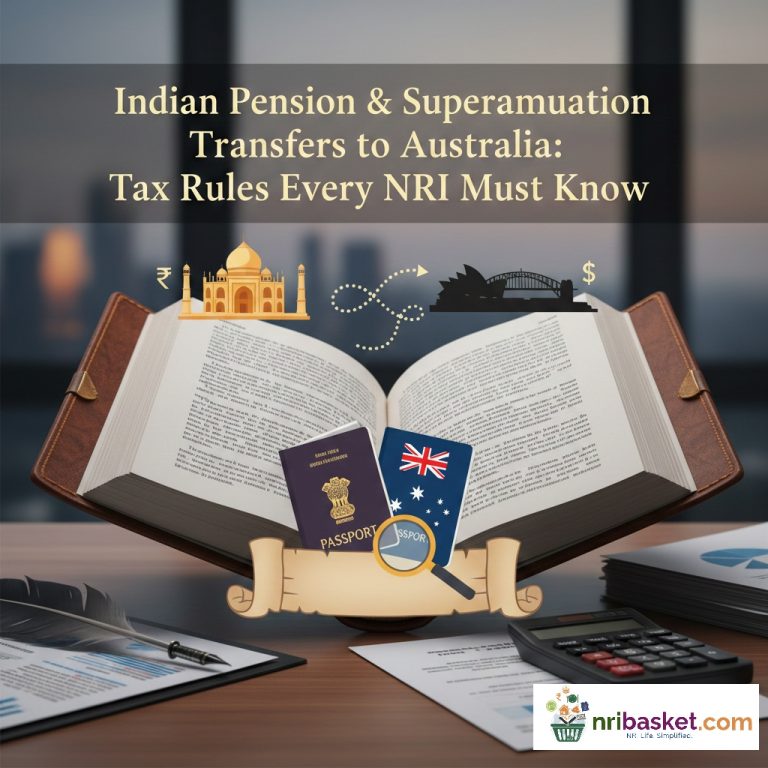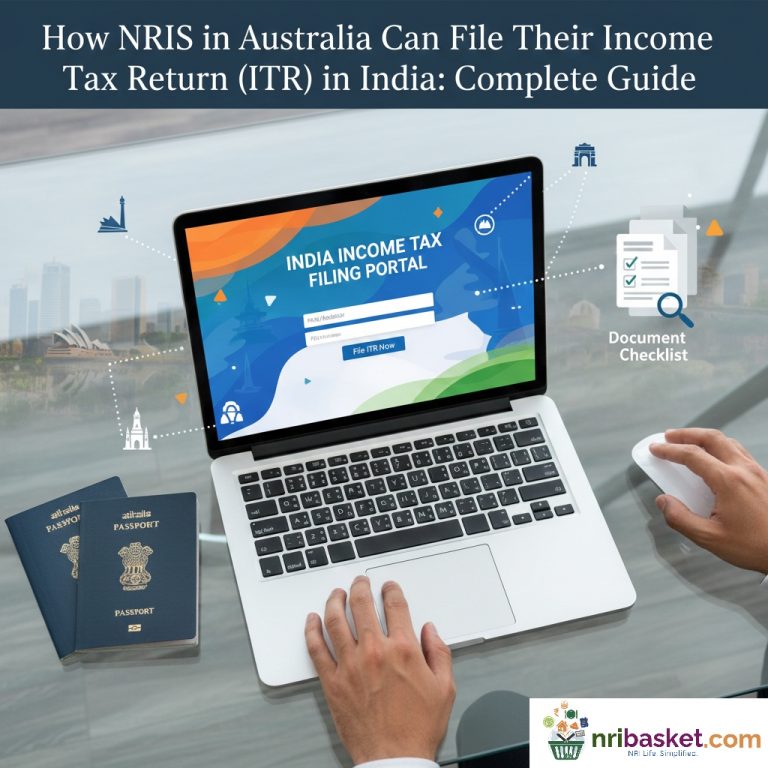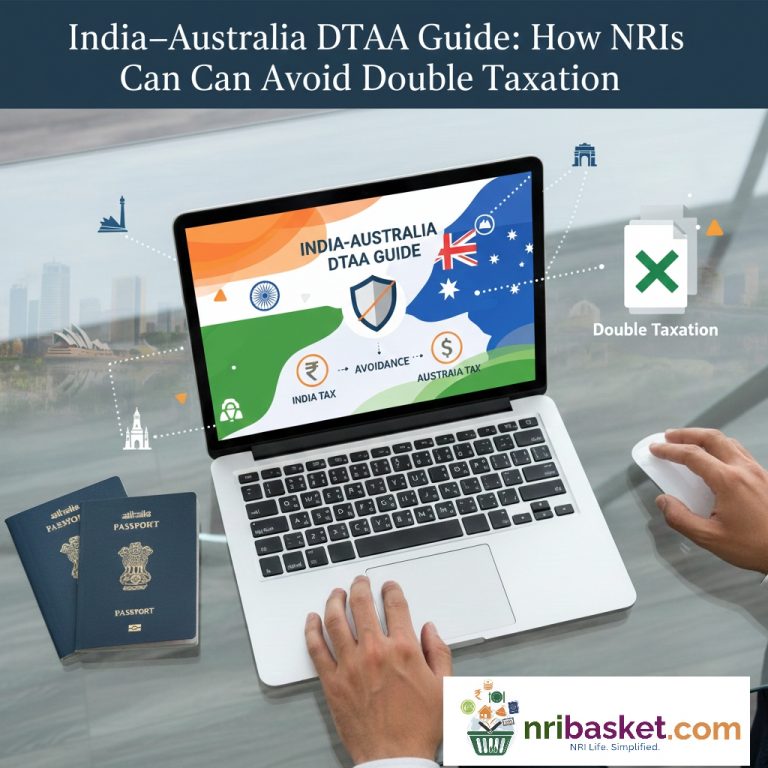
Oplus_16908288
Navigating the India–Australia Double Taxation Avoidance Agreement (DTAA) is essential for NRIs who earn income in India while living in Australia. Understanding these rules helps you avoid paying tax twice, reduce TDS, and claim tax credits smoothly.
Long Answer: The India–Australia Double Taxation Avoidance Agreement ensures that income earned in one country is either taxed only once or given tax relief through credit or exemption. It helps NRIs manage taxes correctly without being taxed twice for salary, investments, or business income.
Long Answer: Since many NRIs earn income in India through rent, investments, or savings while paying taxes in Australia as residents, DTAA ensures they don’t face tax twice on the same income. It provides tax credits, exemptions, and lower TDS rates.
Long Answer: If income is taxed in India first (like rent or interest), Australia allows an equivalent tax credit so that you pay only the higher tax between both countries. This prevents paying tax two times on the same income.
Long Answer: The DTAA covers income sources including employment, investments, immovable property, royalties, technical fees, capital gains, and even income from independent services. Each category has separate tax rules under the treaty.
Long Answer: As an Australian tax resident, you pay tax in Australia on global income. But any income earned in India (rent, deposits, capital gains) is taxed in India as well. DTAA ensures you receive credit in Australia for tax already paid in India.
Long Answer: To claim DTAA benefits, NRIs must submit a Tax Residency Certificate (TRC) from Australia, a filled Form 10F, a self-declaration of residency, and relevant income proofs such as rent agreements or interest certificates.
Long Answer: TRC is issued by the Australian Tax Office (ATO). It confirms your tax residency status for a financial year, allowing you to claim DTAA benefits in India such as reduced TDS and tax credits in Australia.
Long Answer: Form 10F includes details like name, address, residency status, and tax identification number. It is mandatory for foreign residents (including NRIs in Australia) to claim DTAA benefits in India along with TRC.
Long Answer: For NRIs in Australia, interest from NRO accounts normally attracts 30% TDS in India. Under DTAA, this TDS is reduced to 15% when you submit TRC and Form 10F, lowering your tax burden significantly.
Long Answer: Rent from an Indian property is taxed only in India. But since Australia taxes global income, you must report it there too. Under DTAA, Australia gives a foreign tax credit for the tax paid in India to avoid double taxation.
Long Answer: Capital gains from selling Indian property are taxed in India. Depending on your residency status, Australia may also tax the gain. DTAA allows you to claim credit in Australia for any tax paid in India.
Long Answer: Dividends from Indian companies are taxed in India at applicable rates. When filing in Australia, NRIs can claim a foreign tax credit for the Indian tax deducted, ensuring the income isn’t taxed twice.
Long Answer: Short-term and long-term capital gains from mutual funds in India are taxable in India. Under DTAA, any tax paid can be claimed as credit while filing Australian tax returns to prevent double taxation.
Long Answer: Interest from NRE accounts is exempt from Indian tax if you maintain NRI status. You only need to declare it in Australia. Since no tax is paid in India, the question of DTAA credit doesn’t arise for NRE interest.
Long Answer: NRO interest is taxable in India at 30% TDS. Under DTAA, the tax rate reduces to 15% for Australian residents. You can also claim credit in Australia for the tax deducted in India.
Long Answer: Indian tax authorities do not allow DTAA benefits unless you submit a valid Tax Residency Certificate from Australia. Without TRC, full TDS at 30% applies on NRO interest and other incomes.
Long Answer: Freelance or service income arising from clients in India is taxed in India. You must also declare it in Australia. Under DTAA, Australia provides a credit for the tax paid in India, ensuring no double tax.
Long Answer: While filing taxes in Australia, NRIs must report all income, including what they earn in India. DTAA allows them to reduce their payable tax by claiming credits for tax paid in India.
Long Answer: Australia allows a foreign tax offset equal to the lower of: (1) tax paid in India, or (2) tax payable in Australia on that income. This ensures NRIs pay only the higher of the two, not both.
Long Answer: Gifts, inheritance, and family transfers are not part of DTAA because they are typically not taxable as income. However, if they generate income later (like rent), that income falls under DTAA rules.
Long Answer: DTAA doesn’t offer reduced TDS on property sales. You pay capital gains tax in India. Australia may tax the gain too, but DTAA allows you to claim credit for the Indian tax paid to avoid double tax.
Long Answer: Filing an Indian tax return is necessary if you want to claim refunds, adjust TDS, or report capital gains. DTAA benefits apply more smoothly when you file returns with correct declarations.
Long Answer: Australian pension income is not taxed in India. You only declare it in Australia. DTAA is not required for pension reporting unless additional Indian income exists.
Long Answer: Your Australian refund depends on your tax calculation and credits. DTAA only influences how Indian income is taxed and how foreign tax credits are adjusted.
Long Answer: If ESOPs relate to work done in India, India may tax it. Australia will tax it as global income. DTAA allows tax credit in Australia to avoid double taxation on the same ESOP income.
Long Answer: If banks or tenants deduct 30% TDS but your DTAA rate is 15%, you can file a tax return in India to get the extra amount refunded. TRC and Form 10F help in proving eligibility.
Long Answer: India uses April–March, Australia uses July–June. You claim DTAA relief in each country’s respective tax return based on when the income was earned and taxes were paid.
Long Answer: If you are an Australian tax resident, DTAA applies the same way whether you hold OCI, PR, or citizenship. Only residency status determines how tax credits and reliefs apply.
Long Answer: DTAA benefits may be rejected if your TRC is missing, expired, or incorrect; if Form 10F is not submitted; or if income is not clearly traceable. Proper paperwork ensures smooth approval.
Long Answer: Understanding DTAA helps you correctly manage NRO interest, rent, investments, and property transactions. It ensures you legally reduce taxes, avoid penalties, and plan your finances confidently as an NRI in Australia.
India–Australia DTAA Guide: How NRIs Can Avoid Double Taxation
Avoid Double Tax: Complete DTAA Guide for NRIs in Australia
Have a question or want us to add your scenario?
Tell us what you need — we’ll update this guide and answer publicly so other NRIs can benefit. Your question may be featured in the next update.
India–Australia Tax Treaty Explained for NRIs: DTAA Benefits & Rules
NRI Tax Guide: Understanding the India–Australia Double Tax Agreement
How NRIs in Australia Can Save Tax with the India–Australia DTAA




